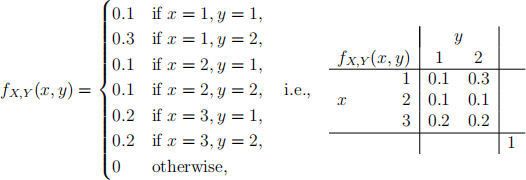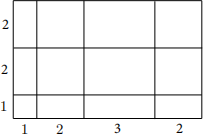Stats 125 – Assignment 3
Hello, dear friend, you can consult us at any time if you have any questions, add WeChat: daixieit
Stats 125 – Assignment 3
Semester 2, 2021
1. The random variables X, Y have joint p.m.f.

(a) Compute P(X and Y are both odd). [2 marks]
(b) Compute E(XY). [2 marks]
(c) Find the marginal p.m.f.’s fX(x) and fY(y). [3 marks]
(d) Compute E(X + Y). [2 marks]
(e) Are X and Y independent? Explain your answer. [1 marks]
(f) Find the conditional p.m.f. fX|A(x) for A = {X and Y are both odd}. [2 marks]
(g) Find E (X|A). [2 marks]
(h) Find the conditional p.m.f. fX|Y(x|y) for X given Y . [3 marks]
(i) Find E (X|Y). [2 marks]
(j) Compute Cov(X, Y). [3 marks]
(k) Compute ρX,Y. [5 marks]
[27 marks]
2. This question refers to the random variables X and Y from Question 1. Use your calculated values from that question while answering this question.
(a) Let Z = Y − aX, where a is a constant to be specified. There is one value of a for which X and Z are uncorrelated. Find this value of a.
[3 marks]
(b) Let W = X − bY , where b is a constant to be specified. There is one value of b for which Y and W are uncorrelated. Find this value of b.
[3 marks]
(c) Verify that

[1 marks]
[7 marks]
3. The picture shows a large rectangle made up of 12 non-overlapping rectangles, with side lengths as shown. Let one be chosen uniformly at random. Let X denote the width (in the horizontal direction) of the chosen rectangle, and let Y denote the height (vertical direction).

(a) Find the joint p.m.f. fX,Y (x, y) of X and Y .
[2 marks]
(b) Are X and Y independent?
[1 marks]
(c) Compute E(X), E(Y) and E(XY).
[3 marks]
[6 marks]
4. For each of the following pairs of random variables X and Y , the conditional distribution of Y given {X = x} is a named distribution, with parameters that may depend on x. For each pair:
i. Write down the conditional distribution of Y given {X = x}, including parameter(s). (2 marks each)
ii. Find E (Y|X). (1 mark each)
iii. Find E(Y). (2 mark each)
iv. Find Cov(X, Y). (2 marks each)
[14 marks]
(a) You have a deck of ten cards, labelled 1, 2, . . . , 10, which you have shuffled thoroughly. Turn over the top card and call its value X. Then turn over the next four cards and set Y to be the number of cards you turned over with labels strictly smaller than X.
(b) You have an urn containing 20 white balls numbered 1 to 20. First a ball is drawn, and we call the number on the ball drawn X, the ball is replaced in the urn. Then X of the balls are painted red, and they too are put back in the urn. Then 5 balls are drawn, with replacement. Let Y be the number of red balls drawn.
5. Random variables X1, X2, X3 are independent with E(Xi) = 0 and Var(Xi) =  for each i = 1, 2, 3. Define
for each i = 1, 2, 3. Define

In statistical terminology, Y is called the sample mean corresponding to the sample X1, X2, X3.
(a) Find Var(Y).
[2 marks]
(b) Find Cov(Xi, Y) for i = 1, 2, 3.
[2 marks]
(c) Find

[2 marks]
[6 marks]
2021-10-06